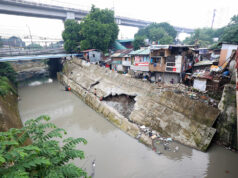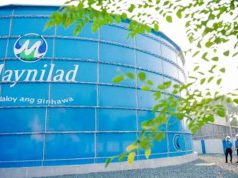Duterte remains wary of totally reopening economy
PRESIDENT Rodrigo R. Duterte said he is not keen on fully reopening the economy at this time, as the number of coronavirus disease 2019 (COVID-19) infections continues to rise.
But Finance Secretary Carlos G. Dominguez III emphasized the need to further ease restrictions, saying there should be a “reasonable balance between safeguarding public health and restarting the economy.”
In a televised address aired early Wednesday, Mr. Duterte said the Philippines has to reopen its economy gradually, unlike the United States and Brazil that have seen a spike in COVID-19 cases after easing lockdown restrictions.
“So we have to be very circumspect in reopening the economy. Dahan-dahan lang (It has to be gradual). And if ever there is going to be a spike again, baka marami ang infected or re-infected, at least ’yung calibrated numbers of people we allowed to go out would be still within manageable numbers,” Mr. Duterte said in a televised address aired early Wednesday.
Metro Manila remains under a general community quarantine, although most businesses have been allowed to resume operations on a limited capacity.
“Tayong pobre (We are poor), we cannot afford a total epidemic or pandemonium. Mahirap tayo, hindi tayo puede sumugal (We are poor, we cannot gamble). We cannot follow the example of other countries because… although they opened the economy for the money to come into the government coffers. There was a problem of relapse,” Mr. Duterte said.
Despite the Health department reporting a rising number of COVID-19 infections after lockdown measures were relaxed, Mr. Duterte believes the country is still grappling with the first wave of the coronavirus pandemic.
On Tuesday, the number of coronavirus cases rose by 1,540 to 47,873.
In an economic forum on Wednesday, Mr. Dominguez said health measures are necessary in the battle against COVID-19, but “increasing economic activity in a responsible manner is a matter of national survival and priority.”
“While the people’s health and safety remain a priority, we cannot keep on retreating from the virus at the cost of our livelihoods. Metro Manila and Calabarzon account for 67% of the country’s economy. It is vital that these regions reopen. The reality is that this virus will not go away until a vaccine is found. In the meantime, we must get back to work while staying safe,” he said at the Pre-SONA (State of the Nation Address) Forum of the Economic Development and Infrastructure Clusters on Wednesday.
The Finance chief noted there is no need to choose between health and livelihood, saying: “We must protect lives in ways that do not prevent us from earning a living.”
For Acting Socioeconomic Planning Secretary Karl Kendrick T. Chua, reopening the economy will depend on the strength of the healthcare system and the practice of safety measures.
“A lot of the outcomes in the economy and their lives actually rest on their own decisions to take care of themselves to abide by the minimum health standards and maintain social distancing,” Mr. Chua said in the same briefing.
Boosting the capacity to test, trace, isolate and treat COVID-19 cases as well as bringing back the public transport system will instill confidence in the country’s ability to reopen and increase prospects for recovery, he said.
Citing latest trade and manufacturing data, Mr. Chua said these are some signs the economy is slowly starting to recover in the second half as restrictions are relaxed.
“All of these are being factored and we’re also seeing a significant part of the economy actually loosening up from the quarantine, so these are I think are important elements to suggest that the economy is starting to recover,” he said.
MORE BORROWINGS
Meanwhile, Mr. Dominguez expects the country’s debt-to-GDP ratio to rise to 50% from 39% last year, as it increases borrowing to mitigate the economic impact of the new coronavirus pandemic.
With revenues in the first half down 16% from last year as virus curbs shuttered businesses, Mr. Dominguez said the government is looking to borrow more to finance the budget and programs to help revive the economy.
“We are planning to borrow up to 50% of GDP, up from 39% at the end of 2019,” he said. “We have the capacity to borrow…and we have the capacity to pay these loans in the future.”
The government is seeking a record P4.3-trillion ($86.83-billion) budget for 2021 focused on reviving an economy that is expected to shrink for the first time in two decades this year and for containing the spread of the coronavirus.
“Our economy has slowed down during the COVID crisis. We have not been able to collect taxes as we had planned, and we have been spending a lot of money on our COVID response,” Mr. Dominguez said.
The Southeast Asian country, which used to enjoy one of the world’s fastest growth rates before the pandemic, is projected to suffer a 2% to 3.4% decline in gross domestic product this year, before returning to growth in 2021. — Gillian M. Cortez, Beatrice M. Laforga and Reuters



